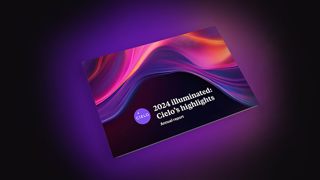Think 2023 will be an employer’s market? Think again
This year is already filled with speculation. With unemployment continuing to drop despite lowered job creation, one might predict a shift from a market that favors employees to an employer market as conditions tighten. But as we’ve seen in the past three years, traditional wisdom isn’t holding as it once did. Today, answers lie not in market trends but in employee trends – and those aren't pointing to an employer market arriving any time soon.
What's different this time around?
I've lived through two economic resets: the 2000 crisis and the bursting of the housing bubble in 2008. With each came fewer jobs and salary depression. There were hundreds of thousands of seasoned employees competing for specialized jobs at whatever rate they could get. That's not the case now.
There are fewer workers available, and this will continue as Boomers retire. Additionally, the expectation of tenure has dramatically shifted, with Millennial employees in particular continuing to change roles more frequently than ever before. That creates churn and pushes the baseline activity up to levels of economic growth. The newest studies suggest that Gen-Z is more transactional in their view of work. This, combined with fewer and fewer mature workers, will have us see a new day for the world of work.
Don’t believe me? Economists polled by Reuters expect the unemployment rate to rise to 4.6% by the fourth quarter of 2023, far lower than during other recent recessions. This is not going to be the employer’s market of past slowdowns.
It's vital that your employer brand remains constant
Economic cycles come and go, but your employer brand is forever. With the increased level of baseline mobility, even in a down cycle, you will need a strong brand to attract and retain talent. That might disappoint some employers who miss the days when they could set the terms of employment. But that attitude fails to recognize the new realities of talent.
Tools like online employer reviews have given candidates more power in their job hunt, as well as their more global perspective on where their next job might lie. How you treat employees in good and bad times is more public now, which allows job seekers to take a longer view in forming their opinion of your company. Employers must recognize the power of employee reviews and focus on the experience they deliver. Making it clear that you nurture high-performing talent and provide clear career progression will cement you as a top-tier employer.
Don't overreact to every swing of the pendulum
We are rapidly breaking the direct correlation between economic growth and job availability. So how do you set a brand that is a beacon for talent through change?
1. Never reduce headcount without a plan and a message.
In the past 18 months, we've seen big brands – especially in tech – tell Wall Street that mass layoffs are a result of optimistic overhiring during the pandemic. Even if reducing your company's headcount is a reasonable solution for current financial strain, it can send a "hire and fire" message to prospective employees. So how can you attract people after this kind of reset?
Commit to messages that talk about sustainability and judicious practices in hiring. People need to know you don’t recklessly open requisitions. When one is open, you’ve got a line of sight to that position being needed in the future rather than being expendable.
2. Think carefully about a return to the office.
Many employers are desperate to get their employees back in the office. But “because we want to” isn't a good enough reason to make this demand, when today's employees generally prefer working remotely. If you can’t articulate a solid reason for returning to the office, don’t do permanent damage to your brand as a people-centered, caring employer. Your best talent won’t stand for it, downturn or not.
3. Don’t neglect your core talent. Reward it.
You know the people who stuck with you through staff shortages and tough decisions? Do not – I repeat, do not – let them feel like that didn't mean something to you. Offering shiny incentives to potential hires, without recognizing your existing workforce, is one of the easiest ways to disenfranchise tenured members. They need to know their contribution was appreciated by receiving the same incentives and rewards you offer to attract new talent.
4. Continue your DEI efforts.
Now that time and supply are in a different place, use this opportunity to reevaluate and revamp your DEI plan. This is your chance to map your workforce of the future. Talent will see it as an excellent indicator of sincerity when you make progress toward your social goals when the imperative isn't as pressing.
5. Level up your hiring experience.
With more time comes more opportunity. It’s not possible to elevate the hiring experience while in turbo mode, but now companies have the space to reflect. However, don't let the fast fixes you applied during the height of hiring become hurdles to top talent. Ghosting during the hiring process is on the rise, with 28% of candidates admitting to it and 75% of them experiencing it from recruiters. To avoid this phenomenon, evaluate your hiring tech and process. What's broken? What can you overhaul? This will help you provide a better experience for candidates and increase your chances of hiring success.
This moment is just that: a moment. As an employer, your best move is getting ready for a future where record hiring (not new job creation) sets the pace. If you barely survived the hiring and reset frenzy, you’re not alone. But the companies that are learning, resetting, reskilling and evolving are the ones that will excel in the next market cycle.
This article was originally featured in Forbes.
About the expert

Chief Executive Officer, Cielo
Marissa is the Chief Executive Officer of Cielo, the world’s leading global talent acquisition partner. She joined Cielo in 2015 as Senior Vice President of Global Operations, where she was instrumental in scaling Cielo’s delivery model.
LinkedIn connect





